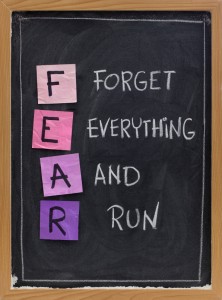14 Mind Traps Afflicting Equity Research Analysts (Part 1 of 3)

How do you avoid making bad stock calls? Being thorough in your research goes a long way, but it doesn’t defend from the most menacing force…your own mind. I’m talking about the psychological biases or “mind traps” that even the most seasoned portfolio managers make. Before you say, “I’m smarter than everyone else and don’t succumb to these silly traps,” be aware studies find some of these traps are more commonly found among higher-performing individuals. (Yes, that includes you!)
Of the 50 or more psychological biases that I researched for my book, I narrowed it down to 14 that most commonly impact professional investors. Even 14 is a big list to easily digest and so I categorized them into these 4 primary areas:
Of the 14 psychological biases, four are fueled by a “fear of failure”, which I review in this Best Practices Bulletin.
How do you feel when you’re wrong? Not good, right? Nobody likes to be wrong, which is what drives the powerful fear of failure, an area that has been studied extensively back to the 1970s when noted psychologists Kahneman and Tversky pioneered theories on the topic. All humans have some level of risk aversion and so fighting the fear of failure doesn’t come naturally. Learning to identify when this fear impairs your stock recommendations and then taking measures to reduce or eliminate the fear will improve your stock picking skills.
If you don’t believe fear of failure impacts your thought process, you’re not human
Here are the four most common “fears of failure” and AnalystSolutions’ tactics for avoiding them:
| Bias | Manifestation | Example | Best Practices for Increasing Self-Awareness |
|---|---|---|---|
| Sunk Cost Fallacy | Investing considerable time or capital into a given stock prevents you from looking at it objectively | When analysts initiate coverage on an entire sector, they may mistakenly recommend many of the names, when in reality only one or two are likely to substantially outperform the market | • When conducting extensive research on a topic, periodically ask, “What will I do if I discover nothing new?” It reduces the amount of time sunk into any one effort • Resist the temptation to make changes to your financial forecasts or valuation multiples to “make it work,” which likely is an effort to show more upside/downside than is realistic, all in an effort to support the commitment you have "sunk" into the call • Be willing to reverse your recommendation when you’ve made a mistake, or your thesis failed to play out • Set aside time (once a month or quarter), to ask yourself, “If I switched firms tomorrow, would my stock recommendations at the new firm match my current ones?” If not, explore why. |
| Loss-Aversion | Avoiding selling a stock at a loss | An analyst finds a new rationale to keep recommending a stock that has been going the opposite direction as the call | • Document your thesis for recommending a stock and the price target specifics before you make your recommendation. If key tenets to the thesis fail to play out, strongly consider reversing recommendation • Follow the “If I switched firms tomorrow..” recommendation above • Sell at the loss and after beating yourself up over the mistake, embrace it as a valuable lesson that will make you a better analyst |
| Anxiety | Allowing high levels of anxiety to lead to investment decisions that are not based on sound analysis and research | Feeling the need to change your view toward a stock on a weekly or monthly basis, even though fundamentals haven’t changed | • It’s important to watch the daily movements in your stocks to understand investor sentiment, but don’t let stock price movements alter your view about the fundamentals • When uncertainty arises around a key stock call, do more work to reduce anxiety and lead to a better decision • Conduct scenario analysis to put limitations around the “worst-case” • Before considering a recommendation change, if possible, think about it overnight |
| Snakebite Effect | Categorically dismissing a stock as a bad future investment due to bad performance in the past | Telling someone, “I can never own that stock again” | • Resist drawing sweeping generalizations about a troubled company’s past, and instead research if its problems were: ○ Within or outside of management’s control ○ Industrywide or company-specific • Consider the company’s weakness as potentially providing tremendous upside if you can identify and forecast the catalyst for change (e.g. examine changes in management or management’s behavior) |
Training your mind to think or behave differently is challenging – consider all the people who say they’ll lose 10 pounds and never do. Periodically review the best practices for avoiding psychological biases above until they’re part of your routine, and you’ll be following the same best practices of the top equity research analysts. (AnalystSolutions provides equity research training with a workshop where we discuss how to spot and avoid most of these pitfalls.)
This Best Practices Bulletin™ targets activity #3, “Make Accurate Stock Recommendations” within our GAMMA PI™ framework. In my next installment, I’ll post my thoughts about more of the most common psychological pitfalls that impact equity research analysts. In the meantime, send me examples of how you were negatively impacted by the biases above. (I’ll keep your identity confidential.)
Visit our Resource Center to find more helpful articles, reference cards, and advice towards your growth as an Equity Research Analyst.
©AnalystSolutions LLP All rights reserved. James J. Valentine, CFA is author of Best Practices for Equity Research Analysts, founder of AnalystSolutions and was a top-ranked equity research analyst for ten consecutive years
